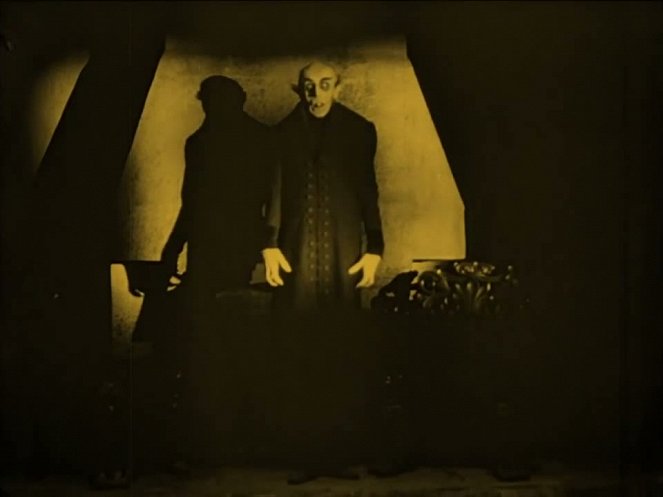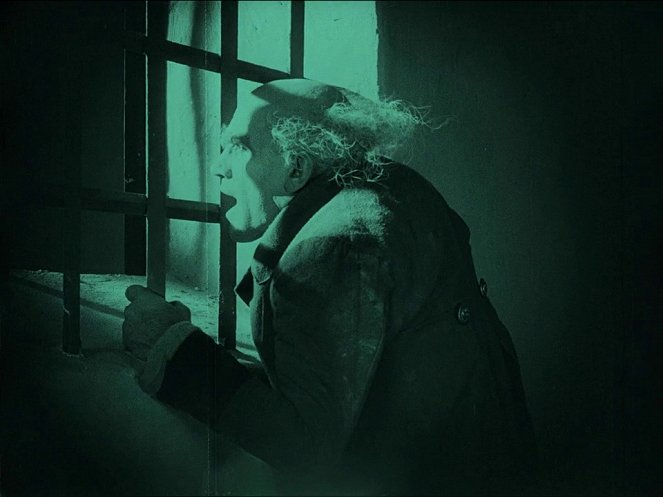Directed by:
Friedrich Wilhelm MurnauScreenplay:
Henrik GaleenVOD (1)
Plots(1)
F.W. Murnau's silent vampire classic. Count Orlok (Max Schreck) decides to move from his ruined castle to the city of Bremen and hires real estate agent Thomas Hutter (Gustav von Wangenheim) to make the arrangements for him. But Orlok is also the vampire Nosferatu, and when he takes a shine to Hutter's young wife Ellen (Greta Schroder), it seems that the worst is indeed possible. Adapted from Bram Stoker's 'Dracula' (though with character names changed for legal reasons), Murnau's film also features some of the most famous sequences in cinema, including the Count's climb up the stairs to Ellen's room, his claw-hand outstretched and his crooked shadow on the wall. (British Film Institute (BFI))
(more)Videos (1)
Reviews (7)
The horror is not induced by scare scenes but by a superbly built atmosphere and, above all, unique shots and scenes. Absolutely unforgettable are essentially all scenes featuring Orlok, whether as a coachman, a landlord, or as a vampire. The shadows cast by Orlok are among the most haunting in horror film history.
()
First of all, I have to say that seeing Nosferatu the Vampire at the Scala in Brno with the absolutely amazing musical accompaniment of Ensemble Marijan was a great experience, and I envy the people of Brno that the student project kinẽma musica was created there and that it is thriving. As far as the film is concerned, sure, it's a rather entertaining film from today's perspective, especially when it comes to the acting of Gustav Von Wangenheim, for example, but it does have moments where all the fun goes by the wayside. For example, Orlok's murder of the ship's crew is an exemplary horror, and the ending with the shadow groping for the door and then for the heart of the beautiful Ellen.
()
If I compare Nosferatu and its genre and artistic similarity to The Cabinet of Dr. Caligari, I like the former a bit better, which together with The Cabinet represents the top works of German Expressionism in film. I'm not that familiar with Bram Stoker's book, so I wouldn't have registered any substantive difference from the source material, which was said to be the result of copyright issues. After watching the film, there were definitely a few memorable scenes that stuck in my mind, like Count Orlok rising from the grave like a plank, or his shadow on the stairs.
()
The film indeed exudes ideas, but unfortunately Nosferatu is evidence that some movies will only remain for future generations as a depiction of "how things were done back then". I can't take Friedrich Wilhelm Murnau's creation seriously in any way and I can't imagine myself ever watching it again, even though I fully appreciate its role in history.
()
Nosferatu does not inspire fear, but after almost ninety years, it does command a great deal of respect. It's like when a modern car enthusiast visits a museum and admires an ancient car from the early 1920s. It may be boxy, have poor performance, and lack comfort, but it exudes the romanticism of the early days of automobile manufacturing. Similarly, in Friedrich Wilhelm Murnau's film, we get to see the pioneering era of filmmaking, when things were done with great enthusiasm and inventiveness. When watching the film in the movie theater, I was surprised by how much Murnau copied Stoker's famous novel. It's no wonder that the widow of the famous writer sued the filmmaker and the film ended up in a dusty archive thanks to her. The accompanying music also surprised me, as it was strongly dissonant and truly unsettling. I was honestly expecting something more classical. Overall impression: 80%.
()



Ads